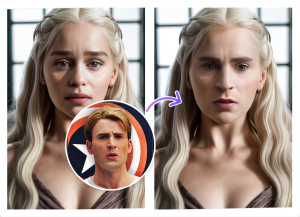Introduction to Modern Filmmaking Techniques
In the realm of modern filmmaking, the use of digital technology to alter or enhance on-screen performances has become increasingly prevalent. Among these technologies, face swapping represents a cutting-edge method that filmmakers employ to create visually striking scenes, transform actors into different characters, or even enhance emotional storytelling. This technique has evolved significantly over the years, becoming an essential tool in both big-budget movies and independent projects.
The Basics of Face Swap Technology
Face swap technology operates by using sophisticated algorithms that can detect and map facial features from one individual onto another in a video sequence. This process involves several steps, starting with capturing the facial data of both the source actor (whose face is to be copied) and the target actor (who will receive the new face). Advanced software then analyzes this data, aligning key facial points like the eyes, nose, mouth, and jawline.
Practical Applications in Cinema
A notable example of face swap technology in action can be seen in the production of blockbuster films where an actor's younger version is required. Instead of casting different actors for the same character at varying ages, filmmakers can maintain the character's authenticity by using the original actor's younger face, digitally superimposed. This use of face swap enhances continuity and allows audiences to maintain a deeper connection with the character throughout the film.
Face Swap for Character Duplication
Filmmakers often face challenges when a scene requires an actor to interact with multiple versions of themselves. Here, face swap technology steps in as a solution. By filming the actor in different positions and swapping the faces post-production, it creates a seamless interaction between the same person's multiple instances. This method was brilliantly executed in films like "The Social Network" where Armie Hammer played both Winklevoss twins.
Technical Insights: Achieving Realism
Achieving a realistic face swap in films demands high-resolution imaging and precision editing. Filmmakers must ensure that lighting conditions, facial expressions, and head movements are consistently matched between the source and target footage to avoid uncanny or disjointed results. Employing motion capture setups can also enhance the accuracy of facial expressions and dynamics, crucial for scenes that require nuanced emotional performances.

Ethical Considerations
While face swap technology offers immense creative possibilities, it also introduces ethical dilemmas, particularly regarding consent and the portrayal of individuals. It is vital for filmmakers to navigate these issues with transparency and respect for the digital representation of actors and real-life figures.
Utilizing Face Swap in Your Filmmaking Process
To incorporate face swap effectively in filmmaking, here are some key steps:
- Choose the right software: Opt for industry-standard tools that support detailed face tracking and realistic texture mapping.
- Plan your shots with face swap in mind: This can reduce the need for extensive post-production adjustments.
- Work closely with actors: Ensure they understand the technology and the context in which their likenesses will be used.
Driving the Future of Film
As digital technology continues to advance, the possibilities for its application in filmmaking expand. Face swap is just one example of how creative boundaries are being pushed to tell stories in new and engaging ways. Embracing these tools can provide filmmakers with unprecedented flexibility and creativity in their narrative constructs.
For more on this revolutionary technology, explore Face swap and its potential to transform your next film project.